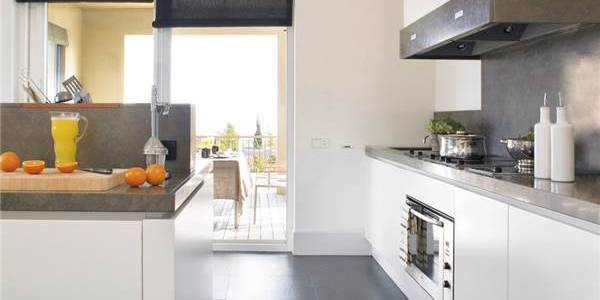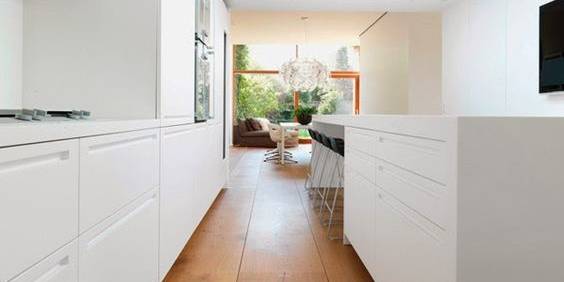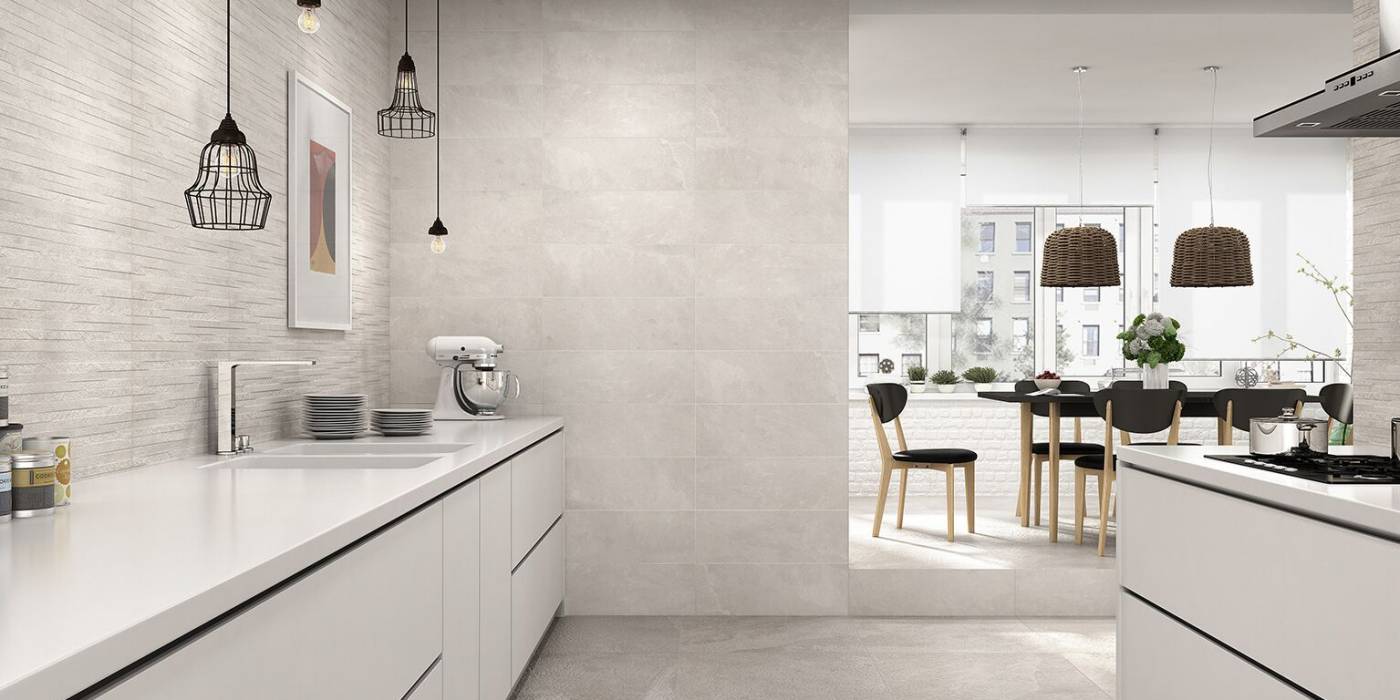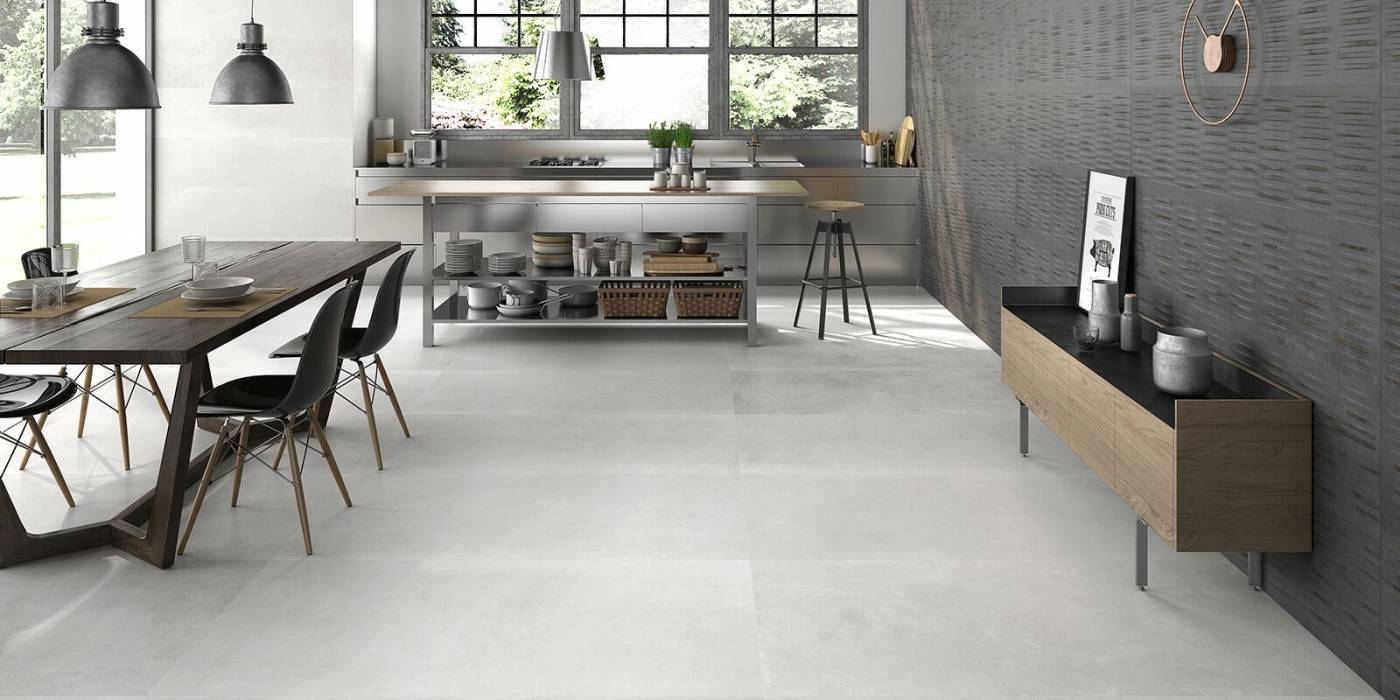Ideas to help you choose your kitchen floor
Kitchen floors are probably among the hardest to choose, as these spaces have their own unique characteristics that have to be taken into consideration.
We know that kitchens are high traffic areas that are particularly prone to dirt,stains and liquids… and therefore ceramic tiles are always the best option. However, not all types of materials are suitable for keeping our kitchen looking the way we want it to for years and years. So what are our options?
Microcement
Microcement is a great choice for those that prefer a more industrial, avant-garde finish. The result is a practical, easy-to-clean kitchen. Microcement is non-porous and comes in a wide range of colours. The downside is that laying this material is no easy task and will require a specialist. There is also a risk of cracking, although this only rarely happens. Another disadvantage is that it can be slippery.

(vía: elmueble.com)
Wood
Wood is a porous material, which means that it is not particularly suitable for use in the kitchen. In addition, it is sensitive to temperature changes and is not as knock-resistant as other materials. On the other hand, it creates a sense of warmth and a natural, country look. Wood-effect ceramic tiles are a great solution, as they will create the same atmosphere, but are longer-lasting and less porous.

(vía: vintageandchicblog)
Stone
Always an excellent choice. Any kitchen featuring a stone floor will produce great results. Stone (granite, slate, limestone or marble) is innately resistant and elegant. When it comes to decorating, stone is a timeless classic that is also easy-to-clean, and each type of stone has its own characteristics. The disadvantage is the price, which tends to be high due to the nature of the material and the fact that laying is no easy task: the more irregular (and therefore more natural) the stone, the harder it is to fit the slabs into your kitchen.

(vía: greenactivehouse)
Ceramic tiles
This is the most resistant material of all, and the perfect solution for interior spaces that are subject to intense use such as kitchens, bathrooms and living rooms, as well as outdoor areas. Ceramic tiles can withstand changes of temperature, humidity and come in countless tones and textures, as well as imitating other natural materials such as stone. They are easy to lay and create uniform spaces. Porcelain tiles are extremely hygienic and are easy to clean (this will vary in accordance with the type of ceramic tile chosen, but in general the cleaning options are far wider than with other types of materials). They are also scratch-resistant, which means that our kitchen will keep looking like new for longer.
Why choose just one?
Keraben Grupo offers a series of products that will enable us to choose the best type of floor for our kitchen. We have seen the pros and cons of each material, and Keraben Grupo’s range includes ceramic tiles with wood, microcement, marble and metal effects. Why choose if we can have it all?
–Stone-effect – Terranova, by Casainfinita
A balanced, flexible collection. A lightweight structure with a focus on texture, Terranova is a great choice for anyone looking for beauty and quality.

–Wood-effect– Portobello, by Keraben
A collection inspired by the barrels used to age the finest wines. A ceramic tile solution that combines the warm beauty and comfort of wood with the benefits of hard-wearing and easy-to-clean ceramic tiles.

Metal – Track, by Metropol
This collection, inspired by a mix of metals, personalises contemporary industrial settings in keeping with urban trends, cladding floors in soft, metallised hues.








